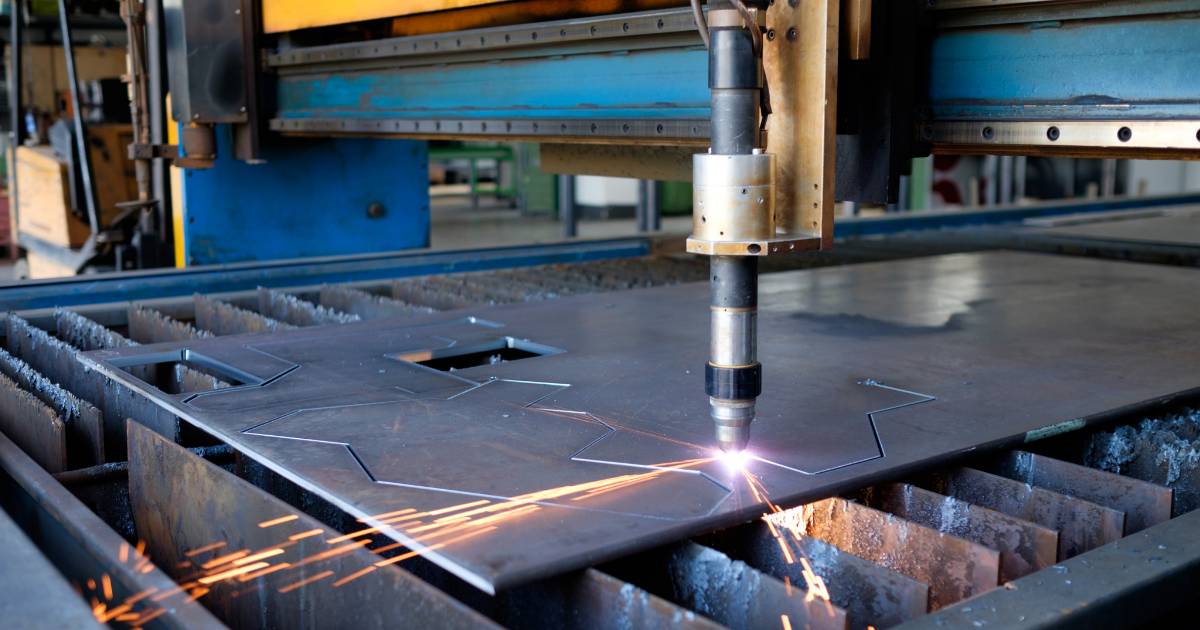The primary focus of this article is a comprehensive examination of the distinguishing characteristics, unique properties, and practical applications of metals, non-metals, and metalloids. We intend to dissect these classifications into their atomic and molecular structures, focusing on electron configurations, bonding types, and their physical and chemical properties, such as luster, malleability, conductivity, and reactivity.
Understanding these basic categories—metals, non-metals, and metalloids—is foundational to materials science and has broad implications for multiple industries. This knowledge enables scientists and engineers to manipulate these materials at the atomic or molecular level, achieving desired properties optimized for specific uses.
Whether it’s creating corrosion-resistant metals for construction, developing new pharmaceuticals that require a specific non-metal catalyst, or designing next-generation semiconductor materials that are more efficient, the applications are virtually endless. Therefore, a deep and nuanced understanding of these basic building blocks is not just academic but also highly practical, driving advancements in technology, medicine, environmental science, and more.

Historical Context: How the Classifications Came to Be
The classifications of materials into metals, non-metals, and metalloids can be traced back to the development of the periodic table in f1869. Mendeleev’s table laid the groundwork for understanding elements based on their atomic number and recurring properties. Over time, scientists such as Henry Moseley refined these classifications through methods like X-ray spectroscopy. The categories became more nuanced with the advancement of quantum theory, which helped explain electron configurations and led to a deeper understanding of why materials exhibit certain characteristics.
Relevance in Everyday Life and Industries
The classifications are far from just theoretical constructs; they have practical implications in our daily lives and across various industries. For example, metals are fundamental in construction, transportation, and electrical conduction and are used in everything from building skyscrapers to manufacturing cars. Non-metals have pivotal roles in organic chemistry and life sciences, with applications that include pharmaceuticals, fertilizers, and water purification. Metalloids, often acting as semiconductors, are the backbone of the modern electronics industry, enabling the development of computers, smartphones, and advanced sensors. Their unique properties make them particularly versatile and invaluable in technological advancements.

Defining Criteria
Atomic and Molecular Structure
When defining metals, non-metals, and metalloids, atomic and molecular structures serve as fundamental criteria. The structure often involves metallic bonding for metals, where electrons can move through a lattice of positively charged ions. This accounts for properties such as electrical conductivity. Non-metals typically engage in covalent bonding, where electrons are shared between atoms, leading to molecular structures like those in organic compounds. Depending on conditions, metalloids can exhibit a mix of these bonding types, making their atomic structures a hybrid.
Physical Properties
The physical properties of these materials offer another set of defining criteria. Metals are generally shiny, malleable, and good conductors of heat and electricity. They often have high melting and boiling points due to strong interatomic forces. Non-metals, in contrast, are generally poor conductors of heat and electricity, and they may exist as gases, liquids, or brittle solids at room temperature. Metalloids usually blend these properties; for example, they might be shiny but brittle or semiconductors exhibiting intermediate electrical conductivity.
Chemical Properties
Chemical properties further distinguish these categories. Metals usually form cations, engage in ionic bonding, exhibit low ionization energies, and have lower electronegativities, making them more likely to lose electrons in chemical reactions. Non-metals generally form anions and, engage in covalent bonding, have higher ionization energies and electronegativities, making them more likely to gain electrons. Metalloids can demonstrate either of these characteristics depending on their state and surrounding conditions. For instance, silicon can form both ionic and covalent compounds.
Atomic and Molecular Structure
Electron Configurations
The electron configurations of atoms are pivotal in determining whether a material is a metal, non-metal, or metalloid. Metals typically have relatively few electrons in their outermost shell and are, therefore, more likely to lose electrons, forming cations. Their electron configurations often lead to large, overlapping electron clouds that allow for the “sea of electrons” associated with metallic bonding. Non-metals usually have more electrons in their outer shell, closer to a full set, making them more inclined to gain electrons to form anions. In metalloids, the electron configuration is usually more balanced, making these elements more versatile in their bonding capabilities.
Bonding Types
The types of bonds elements can form are heavily influenced by their electron configurations. Metals generally participate in metallic bonding, where a lattice of metal ions shares a “sea of electrons.” This type of bonding is responsible for many of the defining properties of metals, such as malleability and electrical conductivity. Non-metals predominantly engage in covalent bonding, where electrons are shared between atoms, leading to discrete molecules with set ratios of atoms. Metalloids can exhibit a blend of these bonding types; for example, silicon can form metallic bonds in certain compounds and covalent bonds in others, like silicon dioxide.

Physical Properties
Color
The color of a material can sometimes offer clues about its classification. Metals are usually shiny and exhibit a metallic luster when freshly polished. They often appear silvery, gold, or copper-colored. Non-metals, by contrast, can be found in various colors and often lack the shiny appearance characteristic of metals. Metalloids can sometimes appear metallic but may also exhibit non-metallic colors, making them less straightforward to classify based on appearance alone.
Malleability
Malleability refers to a material’s ability to be deformed under compressive stress without breaking. Metals are usually highly malleable, which makes them suitable for applications like sheet metal production and wire drawing. Non-metals are generally brittle and break or crumble when subjected to stress, which limits their use in similar applications. Metalloids may exhibit intermediate malleability depending on the specific element and its form.
Conductivity
Electrical and thermal conductivity are key physical properties that distinguish these classes of materials. Metals are generally excellent conductors of both heat and electricity due to the free-flowing “sea of electrons” in their atomic structure. Non-metals are poor conductors because of their covalent bonding and lack of free electrons. Metalloids typically display intermediate conductivity levels and are often used as semiconductors.
Melting and Boiling Points
Metals have strong forces between atoms in their crystal lattice structure. Non-metals have lower melting and boiling points due to the weaker forces (usually van der Waals or hydrogen bonds) between their molecules. Metalloids usually have melting and boiling points that are intermediate between metals and non-metals, reflecting their hybrid atomic structure and bonding capabilities.
Chemical Properties
Reactivity
Reactivity, the tendency of a material to engage in chemical reactions, serves as another differentiator among metals, non-metals, and metalloids. Metals are generally more reactive, often readily losing electrons to form positive ions (cations) in reactions. This is evident in reactions such as iron corrosion or the rapid oxidation of alkali metals when exposed to air or water. Non-metals are typically less reactive because they are less likely to lose electrons; however, many non-metals readily gain electrons, forming negative ions (anions). Their reactivity can be noted in phenomena like the flammability of hydrogen or the reactivity of halogens like chlorine. Metalloids often show variable reactivity, depending on the conditions and substances they interact with.
Oxidation States
Oxidation states offer another lens to distinguish between metals, non-metals, and metalloids. Metals often exhibit a limited range of positive oxidation states, primarily because they tend to lose electrons during chemical reactions. For example, sodium mainly exists in the +1 oxidation state, while transition metals can exhibit a wider range of positive oxidation states. Non-metals usually display a range of negative oxidation states due to their propensity to gain electrons. Oxygen, for instance, most commonly exhibits a -2 oxidation state. True to their hybrid nature, Metalloids can exhibit a range of positive and negative oxidation states, making them versatile in chemical reactions. Silicon, for example, can be found in positive and negative oxidation states depending on its chemical environment.

Metals
Characteristics
Metals are generally recognized for their shiny, reflective surfaces, a property known as luster. Freshly polished or cut metal surfaces exhibit this quality, differentiating metals from non-metals that usually lack such shininess. Malleability is another hallmark property; metals can be deformed under stress without breaking, making them ideal for construction materials or coinage applications. They also stand out for their high electrical and thermal conductivity levels, facilitated by the free-flowing “sea of electrons” in their atomic structures. These properties are so prevalent that they often serve as shorthand for identifying metallic elements.
Due to the strong interatomic forces within metals, additional properties often include high melting and boiling points. Many metals are also ductile, meaning they can be drawn into wires, and they typically have high tensile strength, enabling them to withstand pulling forces without breaking. These attributes are not just academic observations but have real-world implications. For instance, the conductivity of metals like copper and aluminum makes them indispensable in electrical wiring, while the strength and malleability of steel are pivotal in construction projects.
Common Examples
Gold is a noble metal known for its resistance to corrosion and tarnish. It’s widely used in jewelry and electronics due to its malleability and excellent electrical conductivity. Iron is a transition metal, the backbone of the construction industry, used predominantly in steel alloys. It is valued for its tensile strength and durability. Aluminum, a post-transition metal, is prized for its low density and resistance to corrosion, making it essential in aerospace and packaging industries, such as aluminum cans and foils.
Applications in Technology, Construction, Medicine
Metals serve a wide array of functions across different sectors. In technology, metals like copper and gold are indispensable for electrical components due to their high conductivity. Construction relies heavily on steel, an iron alloy, for its strength and durability. Metals like titanium are used in medicine for implants and prosthetics because they are biocompatible and corrosion-resistant. These applications underscore how integral metals are to modern life, serving as the backbone of multiple industries.
Environmental Impact
- Resource Extraction
The mining and extraction of metals often come at a significant environmental cost. Processes such as open-pit mining can lead to habitat destruction and soil erosion. Additionally, the extraction processes often consume large amounts of water and energy, contributing to resource depletion.
- Pollution
Beyond extraction, metal processing can result in various forms of pollution. Smelting and refining activities release particulate matter, heavy metals, and other pollutants into the air and water. Tailings, the waste material left after metal extraction, can contaminate water.

Non-Metals
Characteristics
Non-metals are often poor conductors of heat and electricity due to free electrons and their covalent bonding structure. Many non-metals are gases at room temperature, such as oxygen and nitrogen, while some are brittle solids, like sulfur and phosphorus. Those solid lack the luster. Some, like carbon in its graphite form, can conduct electricity, but still not to the extent that metals can. These properties delineate non-metals from metals and metalloids, giving them unique functionalities in various applications.
Common Examples
Oxygen is a diatomic gas essential for aerobic respiration and combustion processes. Carbon exists in multiple allotropes, including diamond, which is extremely hard, and graphite, which is soft and slippery. Sulfur is a brittle solid often found in mineral deposits and is a key component in fertilizers and certain types of rubber. These non-metals exhibit distinct properties that make them invaluable in different contexts.
Applications in Medicine, Technology, Environmental Science
Non-metals find a wide range of uses across multiple sectors. Oxygen, for instance, is critical in medical respiratory treatments. Carbon is used in various forms in technologies ranging from batteries to carbon fiber in aerospace applications. Sulfur is instrumental in environmental science, as it is a component of the sulfur cycle and is used in pollution control technologies. The specialized properties of non-metals make them integral to advancements in these fields.
Environmental Impact
- Resource Extraction
Unlike metals, many non-metals are abundant in the atmosphere or can be easily produced through biological processes. However, some, like phosphorus, require mining and extraction, which leads to similar environmental issues as those faced in metal extraction, such as habitat loss and water pollution.
- Pollution and Waste Management
The production and use of non-metals can also result in environmental degradation. For example, manufacturing plastic, a carbon-based polymer, contributes to pollution and creates waste that is difficult to manage. Additionally, the extraction and processing of non-metals like sulfur can release harmful gases into the atmosphere.

Metalloids
Characteristics
Metalloids exhibit a blend of metallic and non-metallic characteristics. One of the most defining traits is their semi-conductive behavior. Metalloids can be fine-tuned to conduct electricity under specific conditions, unlike metals, good conductors, or non-metals, generally poor conductors. This property makes them ideal for applications in electronics and photovoltaics. They can also form metallic and covalent compounds, contributing to their versatility in various chemical reactions and applications.
Common Examples
Silicon is a cornerstone material in the electronics industry, primarily for its semi-conductive properties. Boron is less conductive but finds uses in making borosilicate glass and as a semiconductor dopant. Germanium, like silicon, is also used in semiconductors and has applications in fiber-optic systems. These metalloids serve specialized roles due to their unique combination of metallic and non-metallic traits.
Uses
Metalloids have diverse applications owing to their mixed properties. Silicon is a key material in microchips and solar cells. Boron is used in creating tough, heat-resistant borosilicate glass, commonly used in laboratory glassware and cookware. Germanium is used in fiber-optic communication systems and infrared optics. These applications capitalize on metalloids’ unique electrical, thermal, and mechanical properties.
Environmental Impact
- Resource Extraction
Metalloids, like metals, often require mining and processing, which can result in environmental degradation, such as land defacement and water pollution. These impacts can be similar in scope to those associated with metal extraction, including consuming large amounts of water and energy.
- Handling and Disposal
Disposal of metalloid-based products like semiconductors and certain types of glass can pose challenges. While they don’t typically produce hazardous waste in the same way some metals can, incorrect disposal can still lead to environmental issues. For instance, electronic waste that contains metalloids can contaminate landfills and water supplies if not properly managed.

Implications and Future Trends
Advances in Material Science
Progress in material science is continuously refining our understanding of metals, non-metals, and metalloids, leading to novel applications and enhanced properties. Innovations like high-temperature superconductors, advanced alloys, and engineered polymers are pushing the boundaries of what these materials can do. The growing field of nanotechnology, in particular, reveals new ways to manipulate these materials at the atomic or molecular level, resulting in groundbreaking applications such as targeted drug delivery systems and more efficient energy storage solutions.
Potential New Classifications or Applications
As research deepens, there’s the possibility of discovering elements or compounds that defy current classifications or inventing new categories altogether. The field of metamaterials, which involves designing materials with properties not found in naturally occurring substances, holds promise for creating new classes of materials with tailored properties. Similarly, advanced computational models could lead to the discovery of previously unpredictable stable compounds, offering a new array of applications in industries ranging from healthcare to aerospace.
Frequently Asked Questions (FAQ)
What are Metalloids?
Metalloids are elements that possess characteristics of both metals and non-metals. They are typically found between metals and non-metals on the periodic table, serving as a sort of transitional category. Common examples include silicon, boron, and arsenic. These elements often have intermediate electrical conductivity and may form both ionic and covalent compounds.
What Sets Metals Apart from Metalloids and Non-Metals?
Metals are generally solid at room temperature (except mercury), good conductors of heat and electricity, and have a lustrous appearance. Metals are malleable and ductile. They also tend to lose electrons easily, making them excellent for forming ionic compounds.
What are the Characteristics of Non-Metals?
Non-metals, unlike metals and metalloids, are poor conductors of heat and electricity. They usually have a lower melting point and may be gaseous, liquid, or solid at room temperature. Common examples are hydrogen, oxygen, and chlorine. Non-metals generally gain or share electrons when they form compounds rather than losing them like metals.
How Can We Identify Metalloids in the Periodic Table?
You can usually find metalloids in a ‘staircase’ pattern on the periodic table, starting with boron (B) and ending with polonium (Po). This ‘staircase’ separates the metals, found to the left, from the non-metals, found to the right. The arrangement is not arbitrary but rather the result of the elements’ atomic properties, offering a quick visual guide for identification.
Are All Metalloids Used in Semiconductor Technology?
While silicon is commonly used in semiconductor technology, not all metalloids suit this purpose. Each metalloid has unique properties that may make it more or less suitable for specific applications.
Do All Metals React the Same Way?
Metals do not all react the same way. For instance, alkali metals like sodium are highly reactive and can even explode when exposed to water, while transition metals like gold are much less reactive.
Why are Non-Metals Usually Poor Conductors of Electricity?
Non-metals are poor conductors primarily due to the absence of free-moving electrons. In metals, the presence of a ‘sea of electrons’ allows for the easy flow of electric current. Non-metals lack this, making them ineffective conductors.
Is it Possible to Have an Element that is Both Metal and Non-Metal?
No, an element cannot be both a metal and a non-metal. However, metalloids are elements that display properties of both, serving as a sort of ‘hybrid’ category.
References
- Choppin, G.R., Liljenzin, J.-O., and Rydberg, J. “Radiochemistry and Nuclear Chemistry”, 4th Edition, Academic Press, 2013. Link
- “Periodic Table”, Royal Society of Chemistry. Link

